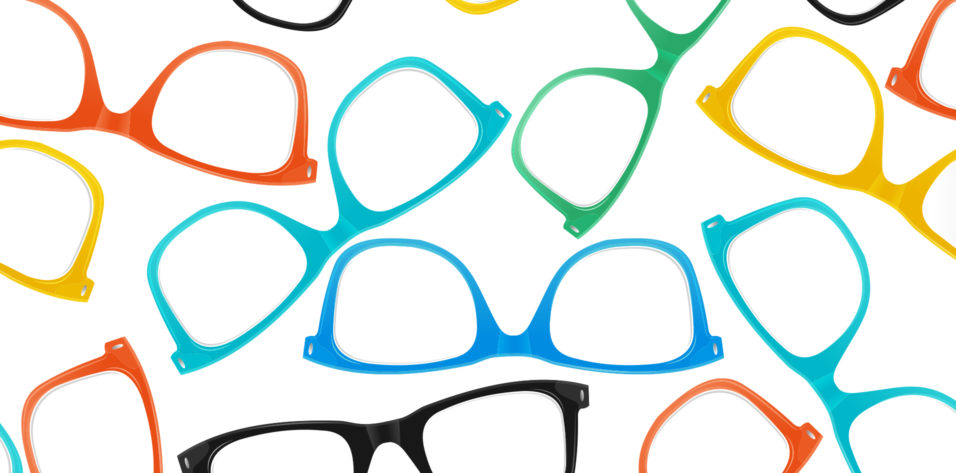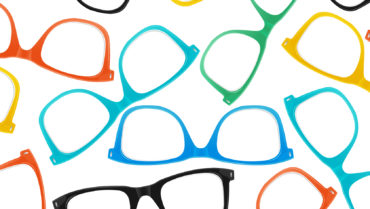
I love my wife dearly, but especially for all the peccadilloes. If you are part of her inner circle, you would know that she is affectionately referred to as Magoo. That’s right—as in Mr. Magoo, the affable cartoon character from the 1950s who always seems to get into trouble because of his extreme near-sightedness. In some ways, that can certainly describe my wife, despite her sheer brilliance: valedictorian of her high school class, Phi Beta Kappa in college, summa cum laude honors, a track record for excelling at every career endeavor … the list goes on. But she has a penchant for not wearing her glasses, and her friends love the fact that she is always the last to recognize people until they are right upon her. Unlike Mr. Magoo, however, she is not a high myope. On the contrary, she is a -1.50 D myope—in my opinion, the ideal refractive error (if there is such a thing).
People often find it astounding that her husband is a refractive surgeon, and she is squinting her way through life. I tell those critics that she has the best of both worlds: not enough refractive error to require glasses except for driving (or if she wants to see her friends from across the street!) and just enough myopia to avoid the pain of presbyopia for quite some time.

As a refractive surgeon, the low myope scares me. My goal for all patients over age 40 years seeking vision correction is always to manage their presbyopia, but one of the biggest challenges is what to do with patients like my wife. I feel fortunate to practice at a time when there are so many presbyopia-correcting technologies and procedures. At the same time, I feel so inadequate in what I have to offer the low myope for vision correction.
It never ceases to amaze me the response I get when I explain to the presbyopic myope that correcting his or her distance acuity will require the need for reading glasses: “But doc, you don’t understand … I don’t need reading glasses!” The limitations of any concurrent presbyopia correction with keratorefractive or lens-based surgery cannot be understated in these patients. Be it a loss in visual quality or the loss of binocular stereoscopic near acuity, the conversation with low myopes must center around the fact that there will be some kind of compromise in pursuing vision correction, as there is not much to provide what they already have: a natural presbyopic correction.
Beyond personality and pathology, there are several other patient-specific challenges in refractive surgery for presbyopes. The low myope is a big one, but age and extent of presbyopia experience is certainly another. I recently treated a 48-year-old patient who underwent refractive lens exchange (RLE) with a presbyopia-correcting IOL. After surgery, the patient had 20/15 distance visual acuity in each eye and J3 near visual acuity binocularly—surely a refractive success, right?
Unfortunately for the patient, she had been a -4.00 D myope preoperatively and was absolutely miserable after surgery due to the complete loss of the accommodative power she had prior to surgery. Despite a reasonable level of near visual acuity, it was no match for the natural vision she had for her entire life. It is challenging to predict the right procedure or technology for every patient, but this case presented a challenge because of the limited exposure she had to presbyopia. Although RLE is a useful procedure in refractive surgery, and IOLs continue to provide the best presbyopia correction, it is rare that I will consider this option in a low-to-moderate myope under age 50.
Other patients to tread lightly with are the emmetropic presbyope and the patient with simple (or very mild compound) myopic astigmatism. In the former, options could include monovision, corneal inlays, or RLE. Monovision and inlays have their limitations in the loss of binocular acuity, and RLE runs the risk of ametropia for distance acuity that the patient may regret having compromised. Patients with simple myopic astigmatism are similar to the low myope: Their distance acuity is reasonably good to function without correction, and they often have more pseudoaccommodation from their astigmatism than might be expected. Correct that cylinder, and you will feel like a hero with the plano refraction, but the patient will look at you as a villain for having compromised his or her functional reading vision.
CONCLUSION
Presbyopia is difficult not only for patients but also for those of us wanting to eradicate it. I try to constantly keep in perspective that, although there are many great technologies to offer patients enhanced vision correction, none can replace our ability to accommodate. The challenge in refractive surgery is that it is not just about treating the refractive error; it is about treating a specific patient and providing him or her with the best possible vision to perform as many visual tasks as possible.
We must think about each patient individually, but, most important, we cannot forget to explain not only the benefits of our surgical corrections but also the inherent risks and compromises that we may bestow on a patient with artificial technology. Sometimes, as in the case of my wife, the technology is present to correct the refractive error, but, to preserve accommodation, we will have to continue to press the presbyopia challenge.



